Charger NiteCore F2


This charger from Nitecore is a light weight dual cell charger with two charge currents and power bank function.
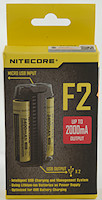



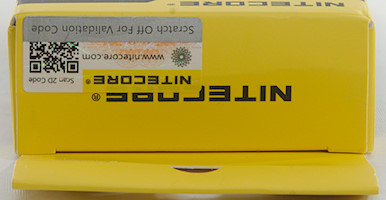
The charger is in a cardboard box with some specifications, battery types and features on it.
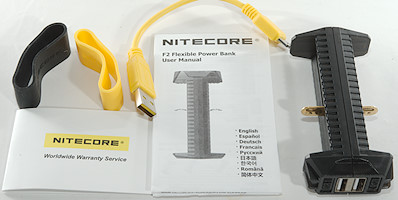
The box contains the charger, two rubber bands, usb-3 cable, instruction sheet and warranty card.


The charger is powered from a micro usb 3.0 connector (Using standard micro usb works fine). The word "INPUT" is molded in the plastic.
The usb output is at the other end and the word "USB1" and "USB2" is molded in the plastic.
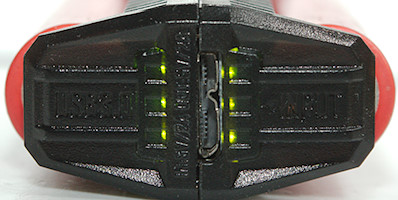
The charger has 2x3 leds hidden under the plastic, they have a couple of different functions:
When a battery is put into the charger they will show voltage: 3 flash on the first and 7 flashes on the last means 3.7 volt.
During charging and power bank they show the usual charge bar, i.e. 1, 2 or 3 leds on depending on power level.
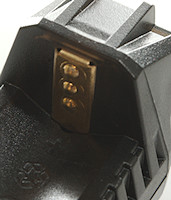
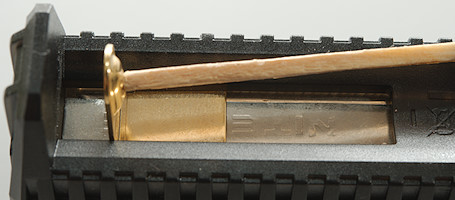
The slots uses the usual construction and the slider is very smooth. It can handle batteries from 29mm to 71mm long, that means just about any protected and unprotected LiIon cell. The charger works best with flat top cells, button top cells can be a bit more difficult to place in it, because they have a tendency to slide.
Depending on the position of the slider the charge current will be 0.5A or 1A, the changeover is around 61mm.
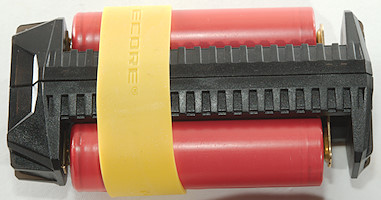
The rubber bands can be used to secure the cells to the charger when it is used "on the move".


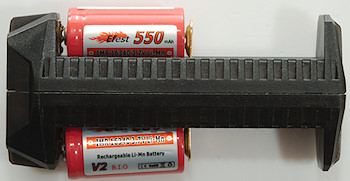

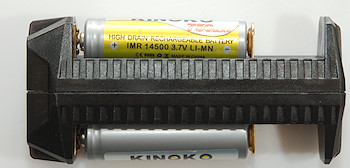

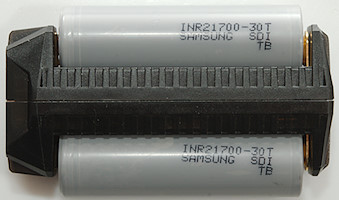
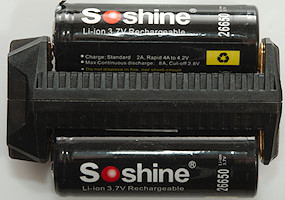
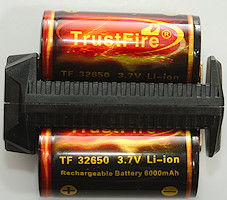
The minimum charge current is 0.5A and that is a bit high for 10440 cells.
The charger can handle 71mm long batteries, inclusive flat top cells.
Measurements
- Around 61mm battery length it will switch between 0.5A and 1A charging.
- When charger has selected charge current it will stay with it.
- Below 2.3 volt the charger will charge with a low current.
- Between 2.3 volt and 2.8 volt the charger will charge with 80mA.
- Above 2.8 volt regular charge current it applied.
- When not powered the charger will discharge with about 0.4mA
- Idle current for charger is 22mA from usb
- Charger will restart if battery voltage drops.
- Charge will restart charging after power loss or battery insertion.
- Charge will make audible noise when powered without a battery to charge.
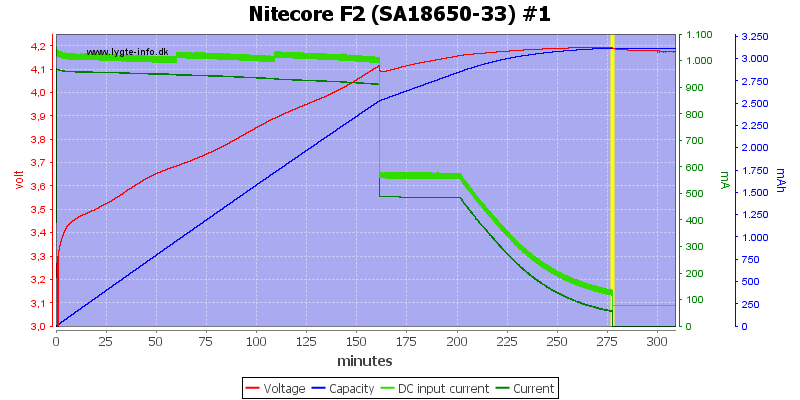
The curve is not a fully CC/CV charge curve, because the current drops from 1A to 0.5A rather fast, for the battery this is just as good as a fully CC/CV curve, but it will be a bit slower.
Termination current is slightly below 60mA.
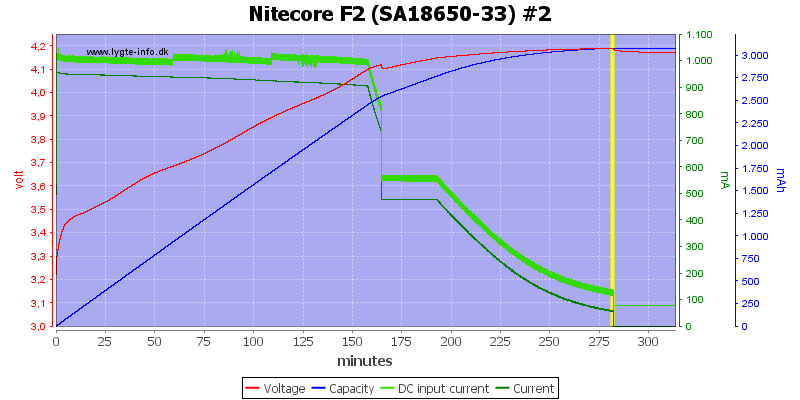
The other side looks the same.
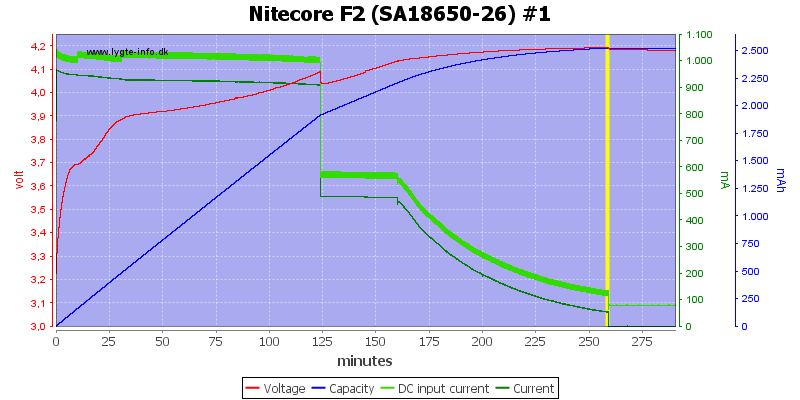

Other batteries also looks the same.
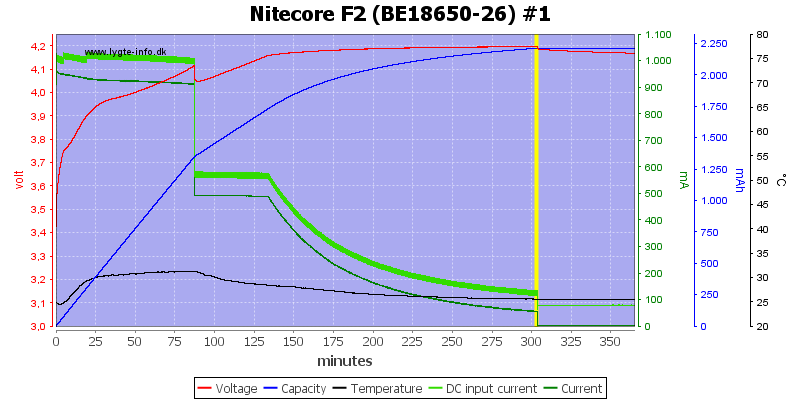
Even the old cell.
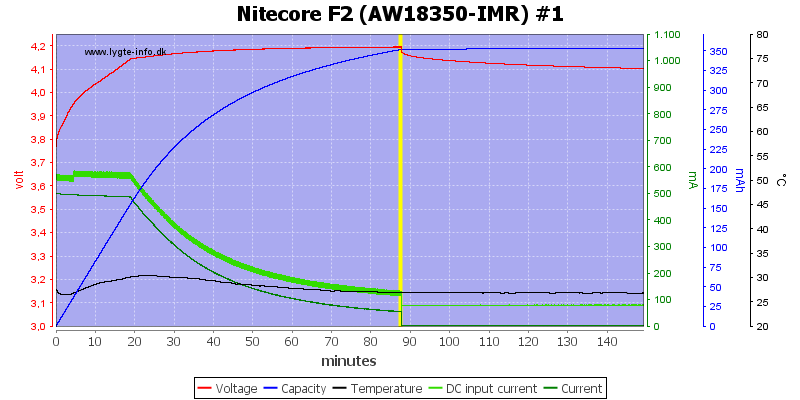
The very old cell is shorter and the charger will only use 0.5A. It do a fairly good charge of this cell.
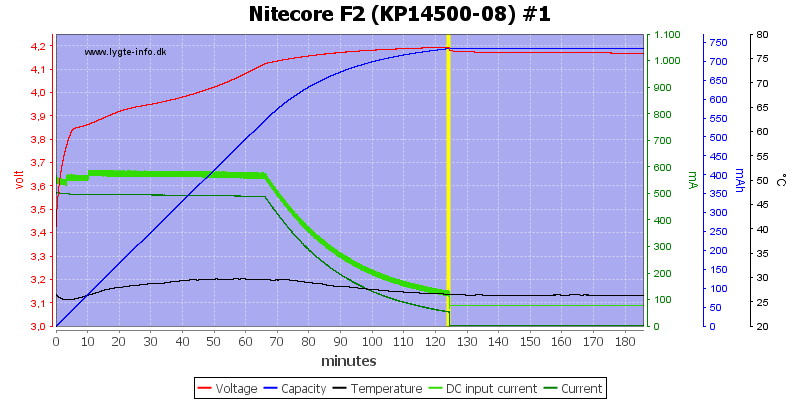
A more recent small cell is also charged nicely.
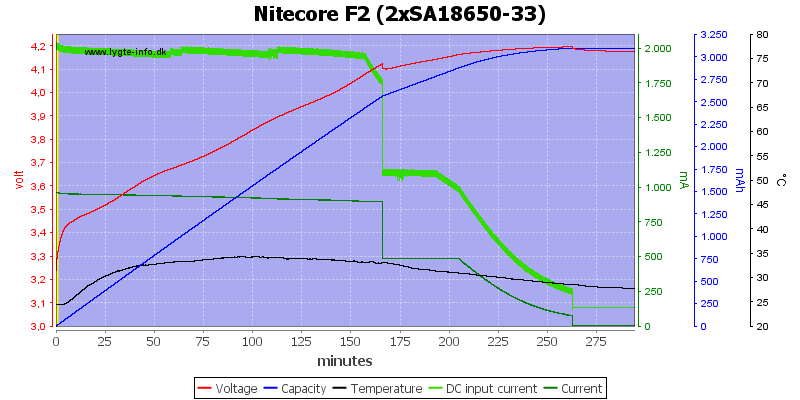
Two batteries at a time and it draws 2A from usb, while charging each cell at 1A.
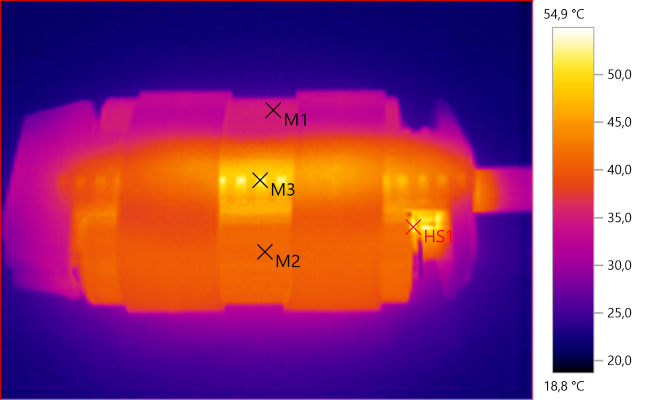
M1: 35,3°C, M2: 41,0°C, M3: 52,3°C, HS1: 54,9°C
The charger uses a linear regulator and get fairly hot during the initial part of the charging. Later in the charging it will be cooler.
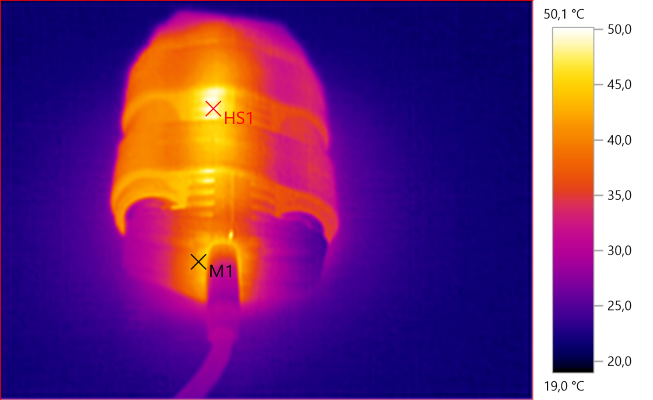
M1: 42,2°C, HS1: 50,1°C
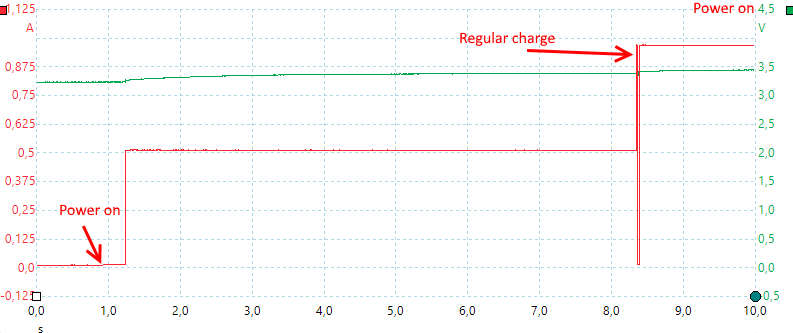
The charger starts in less than a second, but needs some time before it will change to 1A charge current.
USB output
- When usb output is powered it uses 15mA from the battery
- When usb output is turned off it uses 0.4mA from the battery
- Without a battery the charger uses about 23mA from usb input
- Usb output is on while charging and powered directly from usb input.
- Charge can be used as ups, but output voltage will be a bit low.
- Usb output is coded as usb charger (DCP)
- Usb outputs are in parallel.
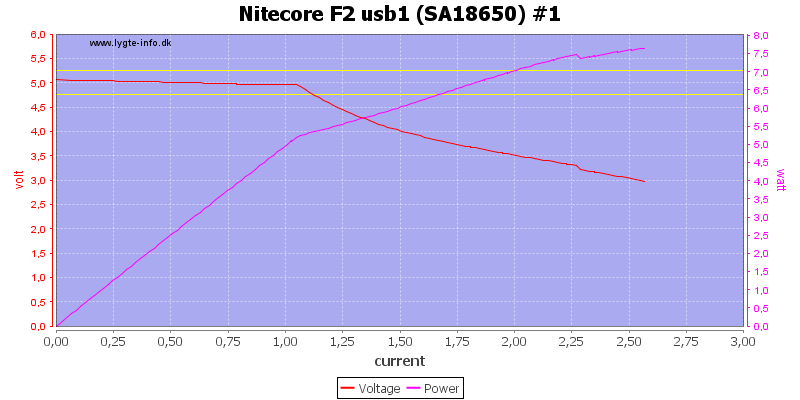
With a single battery the usb output is limited to 1A, the overload protection will first kick in above 2.5A
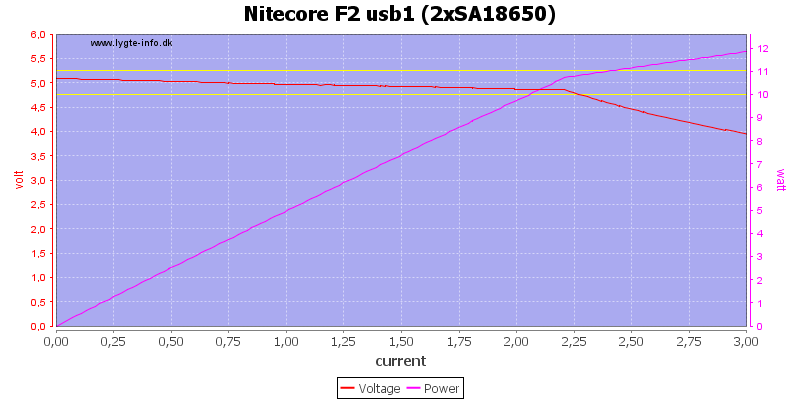
With two batteries the output current is double up.
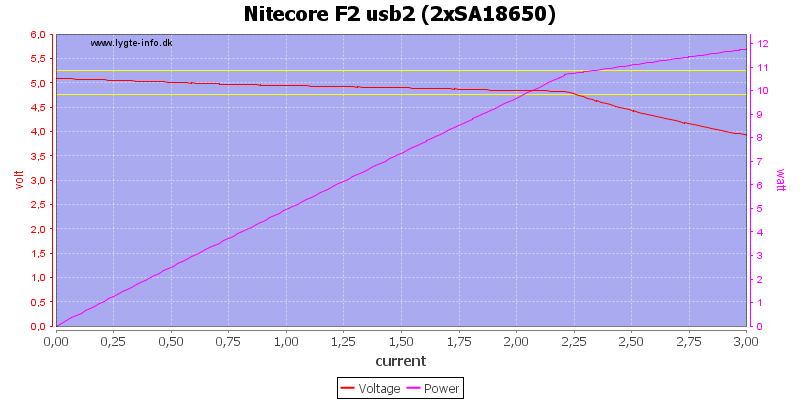
Both usb outputs looks the same.
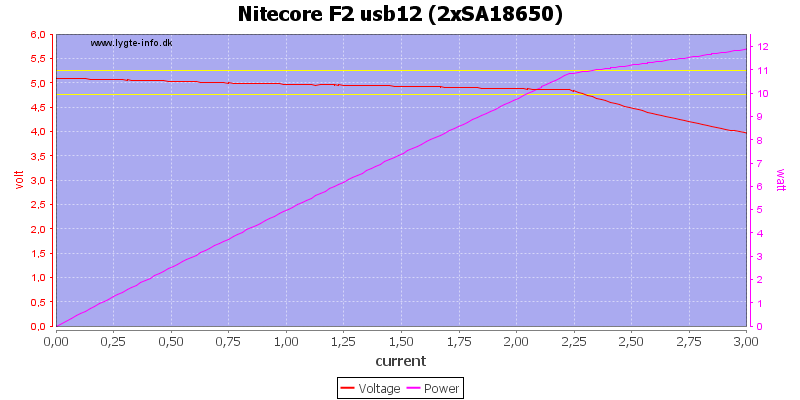
Running them in parallel do not change anything.
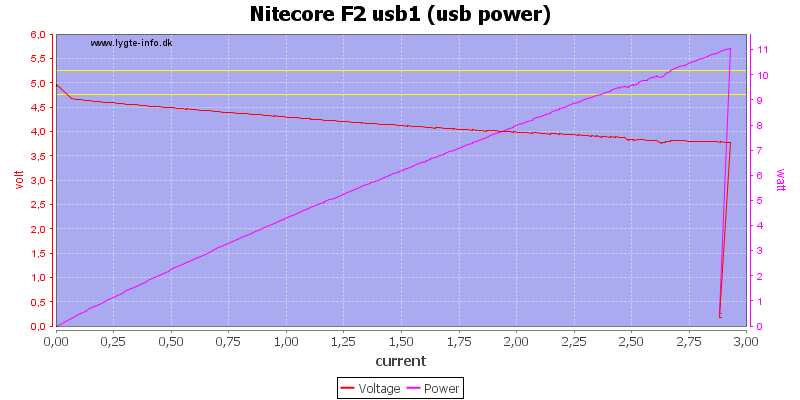
Without batteries and connected to a usb power supply there is voltage on the usb output, but it is a bit on the low side. The limit at 3A was my usb supply that shut down.
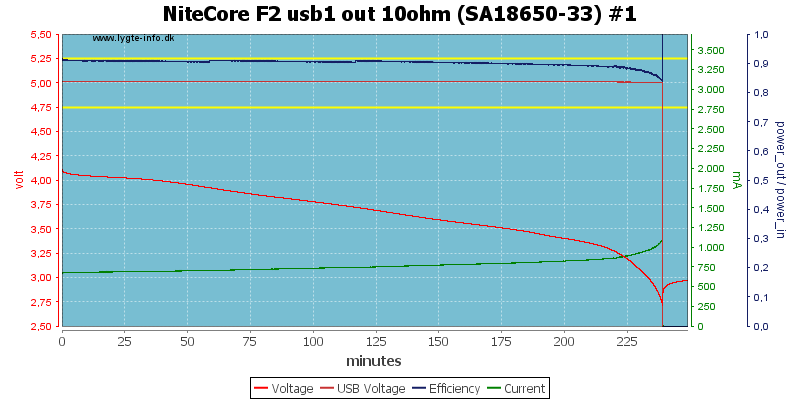
At 0.5A with one batteries the usb output works nicely for about 4 hours. The battery is discharged to about 2.7 volt, this is fine for most modern LiIon batteries.
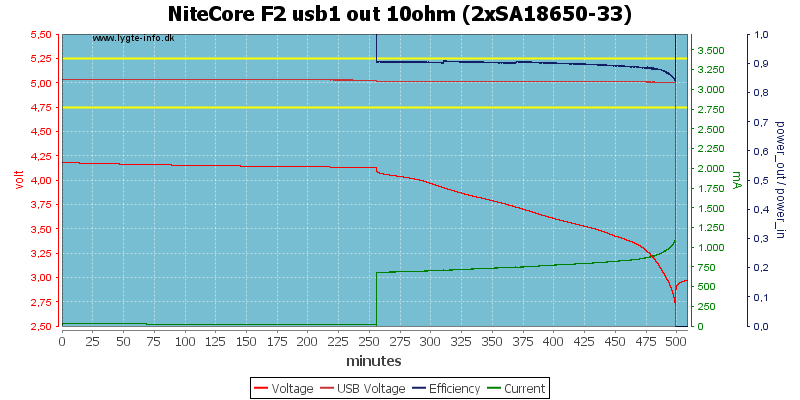
With two batteries the runtime is doubled. It looks like it first drains one battery, then switch to the other.
This is probably because there is a minor voltage difference between the two buck converters. A check shows: USB1: 5.071V USB2: 5.098V.
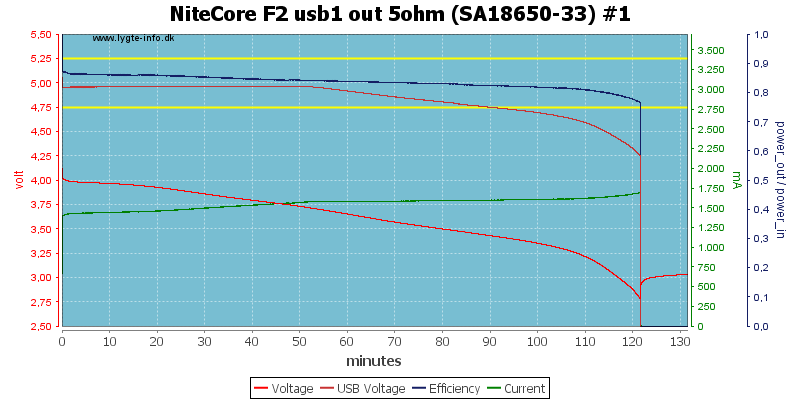
At 1A with a single battery it has trouble maintaining the voltage when the battery voltage is low.
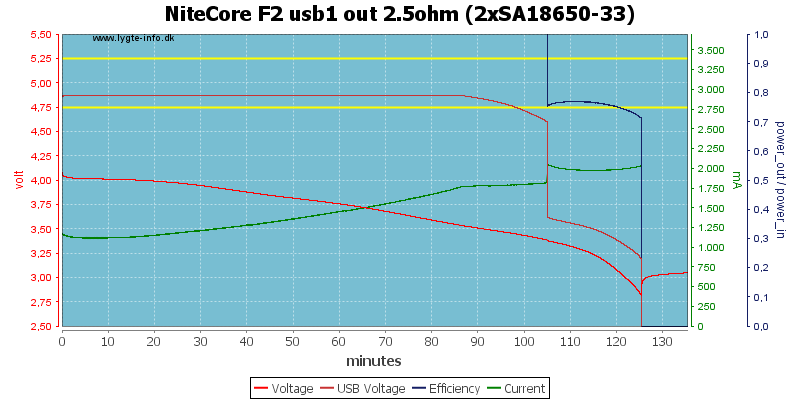
With two batteries and 2A I get much better result, it run about 1½ hour before voltage drops.

There is not much noise in the output: 5mV rms and 64mVpp

At it do not increase much with increased load: 9mV rms and 92mVpp

Again very low noise at 11mV rms and 88mVpp
Conclusion
This is a nice little charger, the termination current is low enough to also handle smaller cells, the automatic current selection may give longer charge times, but prevents mistakes. It can be a bit tricky to load two cells into the charger, especially button tops.
The power bank function is not perfect, but with two batteries it works fairly well.
I will call it a good charger.
Notes
The charger was supplied by a FastTech for review.
Here is an explanation on how I did the above charge curves: How do I test a charger
Read more about how I test USB power supplies and chargers













































